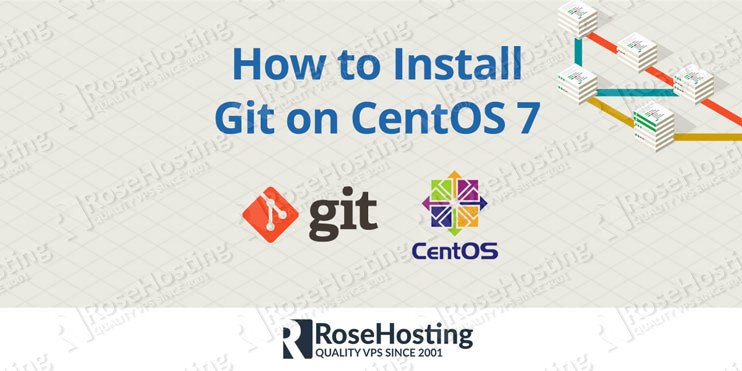

Table of Contents
1. Connect via SSH
To install Git on your CentOS 7 VPS you need to have SSH access to the server. If you don’t know how to do this, you can follow our guide on how to connect to a Linux server via SSH.
2. Install Git on CentOS 7
Once you log in you can use the following command to install Git:
yum install git
3. Verify Git installation on CentOS 7
To verify that Git is successfully installed you can use the following command:
git --version
The command above will also show the version of Git installed on your CentOS 7 VPS.
# git --version git version 1.8.3.1
4. The configuration of Git on CentOS 7
The first thing that you might want to do after the installation is to configure your name and email address in Git so the changes you commit contain the correct information. You can do that by using the following commands:
git config --global user.name "Your Name" git config --global user.email "user@domain.com"
5. List configuration settings
To verify that you entered the correct information you can use the command below:
git config --list
The output should be similar to the following one:
# git config --list user.name=Your Name user.email=user@domain.com
6. Git command line option and help
For more information and command line options you can use the --help flag.
git --help
It will list the most commonly used Git commands.
add Add file contents to the index bisect Find by binary search the change that introduced a bug branch List, create, or delete branches checkout Checkout a branch or paths to the working tree clone Clone a repository into a new directory commit Record changes to the repository diff Show changes between commits, commit and working tree, etc fetch Download objects and refs from another repository grep Print lines matching a pattern init Create an empty Git repository or reinitialize an existing one log Show commit logs merge Join two or more development histories together mv Move or rename a file, a directory, or a symlink pull Fetch from and merge with another repository or a local branch push Update remote refs along with associated objects rebase Forward-port local commits to the updated upstream head reset Reset current HEAD to the specified state rm Remove files from the working tree and from the index show Show various types of objects status Show the working tree status tag Create, list, delete or verify a tag object signed with GPG
You can also refer to the Git documentation.

PS. If you liked this post on, how to install Git on CentOS 7, please share it with your friends on the social networks using the buttons on the left or simply leave a reply below. Thanks.